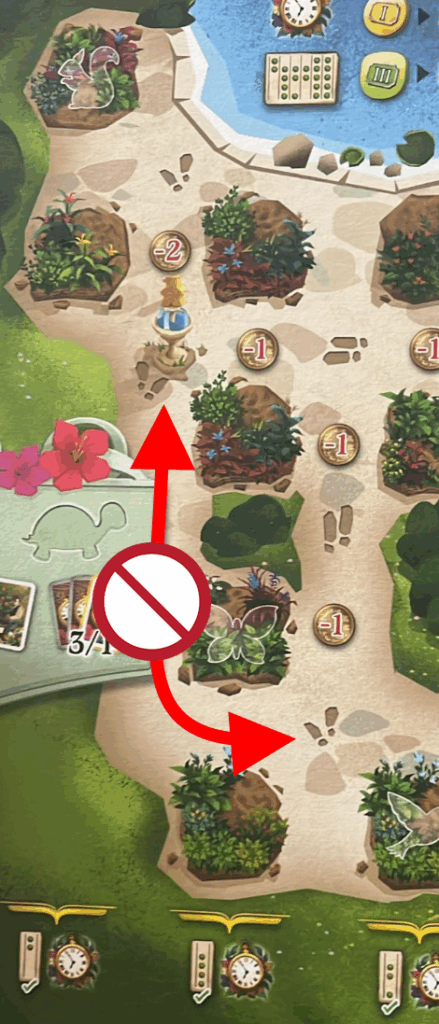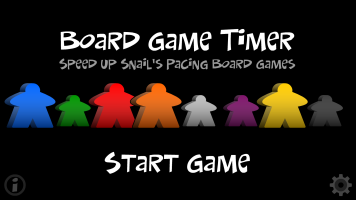In this section per game clarifications will be posted as well as the English rules in case these are not provided with the game.
Rules download section
Tournament Schedule
Saturday 25 October 2025 – at SPIEL’25 in conference room “Deutschland”
| Registration | 09:00 – 09:45 |
| Welcome Speech | 10:00 |
| Start first game | 10:15 |
| Start Award Ceremony | ~ 18:30 – 19:00 |
| End of Event | ~ 19:30 – 20:00 |
Game specific Tournament Rules – version 1.2 – as of 13.10.2025
In addition to the General Tournament Rules, the following rules apply specifically to the tournament games.
Recent edits are highlighted in blue.
Tip: Reread the rules after playing the game a few times — you’ll likely discover that you’ve overlooked some details.
Time per Game
Games are played in the following order.
The mandatory maximum playing times for each game — which include setup and scoring — are as follows:
| Cities | 60 min. |
| 7 Empires | 150 min. |
| Botanicus | 90 min. |
| Forest Shuffle | 70 min. |
Time Control Rule – 7 Empires
7 Empires is played using the Board Game Timer app. Each player is allocated 36 minutes of total playtime. For every full minute exceeded, 5 victory points will be deducted at the end of the game.
This new rule is being introduced on a trial basis exclusively for 7 Empires. If the timer is used in other games, the previous procedure remains in effect: Players must make their moves immediately when it’s their turn, without any extra thinking time. This will be monitored by the referees.
Cities
Change to ‘Setup – 3’: Immediately before the start of the game, the tournament organisers will draw lots for each table to determine which city will be used. The different cities will be used equally often.
Change to ‘Setup – 9’: The selection of the 4 starting tiles is moved after steps A-D of the ‘Start of a Round’ setup.
Clarification on ‘building space’:
- A city space (gray background) is considered to be a building space, if it is empty (color is visible), there is a Special Feature Tile on it or a building is on it.
- The color of a building space is determined by the topmost element on that space.
- If a house is built there, the space takes the color of the house.
- If an empty Special Feature Tile is placed on the space, the player may choose a color. However, only one color can be assigned at a time — multiple colors are not allowed.
- If neither a house nor a Special Feature Tile is present, the space retains its own original color.
Clarification on ‘areas’ (water, park, buildings spaces of same color):
- Two areas of the same type cannot overlap.
- Two groups of spaces of the same type that are horizontally connected form a single area. Therefore two areas of the same types cannot touch each other.
Clarification on ‘Feature Tiles’:
- Feature Tiles that are removed from the game remain face-up and visible to all players.
- Feature Tiles do not stack.
- A city space with a Monument Feature Tile is no longer considered to be a building space.
Clarification on “Building Pieces”: Building Pieces that are removed from the game remain visible to all players.
Change to ‘City Achievement Boards:’
- New York – Avenues: 2 horizontal or 2 vertical lines of 6 city spaces (with or without buildings on them).
This is how it is intended to be and it allows monuments on the Avenues.
Clarification of ‘City Achievement Boards:’
- Barcelona – Ciutadella Park: Feature tiles do not need to be different.
- Buenos Aires – Plaza de Mayo: A monument on the plaza is allowed, as it is not a building.
- Buenos Aires – Lago de Regatas: “Surrounded” refers to any completely adjacent space. Diagonally adjacent spaces do not matter.
- Lisbon – Neighbourhoods:
- Areas must not overlap.
- A space with a monument must never be part of an area.
- New York – Avenues: Avenues have to be parallel.
- Sydney – Circular Quay: the 4 buildings need to be adjacent to the same water area. The size of the area does not matter.
- Venice – Bridges:
- Between a pair of building spaces exactly one water space is required.
- A Special Feature Tile can be used to build a pair of buildings.
- Each pair of building space must be unique — no duplicate spaces in pairs are allowed! Water spaces may be shared between pairs.
- City spaces with a monument are not allowed, as they are no building spaces.
Clarification of ‘Scoring Cards:’
- Parkland, Bay: The number of spaces in the largest area is counted, divided by 2 and then rounded down.
7 Empires
Make sure you are using rules version 1.01 to prepare. Rules version 1.01 can be downloaded at the top of this page in the ‘Rules Download’ section.
Rule version 1.01 contains several added or clarified rules. To identify if you have the rules in version 1.01, compare
- ‘3.3. A New Decade, 2. – Infantry’. This paragraph begins in version 1.01 as follows: “All 7 monarchs choose one city region and …“
- ‘4.2. Move & Fight, 2. Land units’: the second paragraph reads “If a land unit ends their movement in a region with at least one foreign unit, a fight is triggered automatically. In case of several units, the entering unit decides which unit to fight against. When a land unit wants to cross a region occupied by a foreign land unit, the foreign monarch can force a fight. Ships (in port) cannot force a fight.“
7 Empires will be played in the standard setup. None of the variants from “6. Variants” will be played.
Change to ‘FAQ / Negotiations’: This game follows General Tournament Rules regarding player interaction: During gameplay, it is prohibited to negotiate with, persuade, or otherwise influence other players.
Change to ‘2. Game Setup – 9: Influence Cards and Monarchs’: The starting distribution card is drawn centrally shortly before the start of the game. All tables play with the same card.
Clarification of ‘3.2. Your Turn – b)’: alternativ wording: Choose one of the Empires that has not yet acted during the current decade and in which you have at least 3 Influence.
If you have at least 3 Influence in more than 1 Empire which hasn’t acted yet (and you are not the Monarch of), you must choose the Empire which you have the most influence of (compared to your influence in all Empires). If tied, you choose.
Clarification of ‘3.3. A new decade – 2. – Infantry’: The monarchs deploy their infantry units according to the order in which they are listed on the board, beginning with Prussia and ending with Great Britain.
Clarification of ‘4.2. Move & Fight’:
- If you wish to move a land unit through a region occupied by another monarch’s unit, you must first ask that monarch for permission. If they grant it, you may proceed; if they refuse, you can choose to engage in combat, move elsewhere, or remain in place.
When requesting passage, you may optionally specify the destination region to which you intend to move your unit. The defending monarch can take this information into account when deciding whether to grant free passage.
Any commitment made by the defending monarch is binding: they may not force combat during your movement if passage has been granted.
If you have specified a destination region, you are also obliged to carry out this movement. - The last unoccupied city of an Empire — as distinct from a city region — may never be occupied under any circumstances.
Clarification: Mandatory and optional part of actions
- Build & Deploy – you have to build/expand 1 city and deploy units, and you can’t choose an occupied city with palace for the 3 units option to avoid deploying units.
- Move & Fight – you are free not to do anything.
- Attack – you have to deploy 2 units, but you don’t have to move them.
- Palace – you have to build/expand a palace and collect power points.
- Empire – you have to collect power points.
Clarification of ‘5. Game End and Scoring’: Scoring at the end follows the usual rules: crowns in occupied regions do not count.
Botanicus
Expert Variant will be played.
Variant: Garden card selection – Change to ‘Drawing a Garden card’: Whenever you gain a Garden card, draw 2 cards and choose 1 of them to keep. Place the others on the discard pile.
Change to ‘Changes to Game Setup – 3’: The player at seating position 1 gets the Garden tableau with the icon showing the Action Flower in position 1 in the stack, player at seating position 2 gets the tableau having the Flower in position 2 in the stack, …
Clarification of ‘Getting Ready – Unique Gardens’: Please note that the garden with only 4 Basic tasks receives an additional Final Scoring card
Change to ‘Getting Ready and Round One’: In this step, you may finalize the position of the Gardener and the Special Tasks. This is done in player order, starting with the starting player.
Clarification of ‘Tasks’: To fulfill a task, the specified plants must be present somewhere in the corresponding row. The position of the plants within the row does not matter. Additional plants in the row are allowed and do not affect task completion.
Clarification of ‘play 1 Garden card’: There are 6 cards that give you 2 steps on one of the tracks (Money, Wheelbarrow, and Shovel). It is not possible to buy additional steps for these cards.
Clarification on ‘Garden 3’: There is no valid path leading down from the left fountain.

Clarification of ‘Planting actions’: New plants can be planted in a bed where a plant is already growing. The old plant is replaced by the new plant. The old plant is returned to the supply and is lost. The level of the plants doesn’t matter in this case. A Level I Plant can replace a Level IV Plant or vice versa.
Clarification of ‘Victory Points and Prize Tokens’: If you reach the end of a track that offers prize tokens (Money or Shovel), but those tokens have already been claimed, you receive neither a prize token nor any victory points. This rule applies especially to the path unlocked by the frog.
Chance to ‘Last action and final scoring’: The tie-breaker “Name 4 plants with their Latin name” is omitted.
Forest Shuffle + Alpine
The Forest Shuffle base game is played together with the Alpine Expansion.
Please pay particular attention to the detailed explanations of the individual cards (e.g. Mole or Violet Carpenter Bee) in the document ‘Rules – Forest Shuffle – Appendix’. This can be downloaded at the top of this page in the ‘Rules Download’ section.
Clarification of ‘Game preparation – 3’: After shuffling, 25 random cards (10 + 15) are placed back into the game box unseen.
Clarification of ‘Game preparation – 5’: The two winter cards are to be inserted into the pile individually, in different places. Then shuffle the pile well. It must (as always) be cut by a second player.
Clarification of ‘Game play – limit of hand cards’: Each player must reveal the number of cards in their hand at any time when asked.
Clarification of ‘Playing a Card and Checking the Clearing – Order of events’: The various ‘activities’ during your turn must be carried out in the following order: Play a card – Pay the cost – Place the top card from the deck in the clearing (if a tree has been placed) – Execute the effects of mushrooms – Execute the effects of the card played – Execute the bonus of the card played – Check the clearing.
Clarification of ‘Playing a Card and Checking the Clearing – Trees’: Whenever you play a tree, you then turn over the top card from the deck and place it in the clearing. It does not matter whether the tree was played directly at the start of the action or later as a result of an effect or bonus. The card from the deck is placed in the clearing immediately, even before effects or bonuses are activated.
Clarification of ‘Effects – Mushrooms’: The permanent effect of mushrooms is always triggered when a corresponding card is played into your forest. It does not matter how the card comes into play.
Clarification of ‘Explanation of symbols – ⟳’: Take another complete turn after this one. Note that the clearing must be checked at the end of this turn and therefore before the next turn.
Change to ‘Scoring’: The final scoring is carried out on the scoring sheet available ‘Rules Download’ section. To increase clarity and traceability for all players at the table, divide the scoring within the categories ‘Trees’, ‘Bottom’, ‘Top’ and ‘Right and Left’ into suitable small scores, which you enter individually. Then calculate the subtotals for each category.
Clarification on cards:
- Mountain Hare: The Mountain Hares are always treated like European Hares. The only difference is that a Mountain Hare does not share its space with other hares. In particular, the Red Fox’s effect counts every hare.
Rule Inquiries & Suggestions
Should you have any questions regarding the rules or wish to propose a change, please feel free to submit them below. Our team will be glad to assist.
Board Game Timer
In order to keep the playing times of the games within normal limits, we are planning to introduce time limits on the playing time per player per game this year wherever necessary.
Please expect that during the tournament for individual games the app Board Game Timer will be used. It will measure the playing time per player for the entire game.
![]()

A special thanks to our partner Mads Purup, the developer of the app, who has extended it for us, kept it free of charge and also ported it to Android. Please give him good reviews in the App Store/Google Play if you like the app and recommend it to other players.
The timer app can be used either at all tables for the entire game, or after the referee’s decision for the remaining game time at tables where an overlong game appears.
The use of the timer app is explicitly not aimed at forcing particularly fast play. Accordingly, the time limits will be such that no one should be in danger of hitting a time limit during normal fast play.
Each team is required to bring two mobile devices to the tournament with the app installed, fully charged and in flight mode.
Please install the app on your devices and familiarize yourself with it in case it is used in the tournament.
The App will be started in mode “Count Up”. Time limits will be communicated by the referees.


